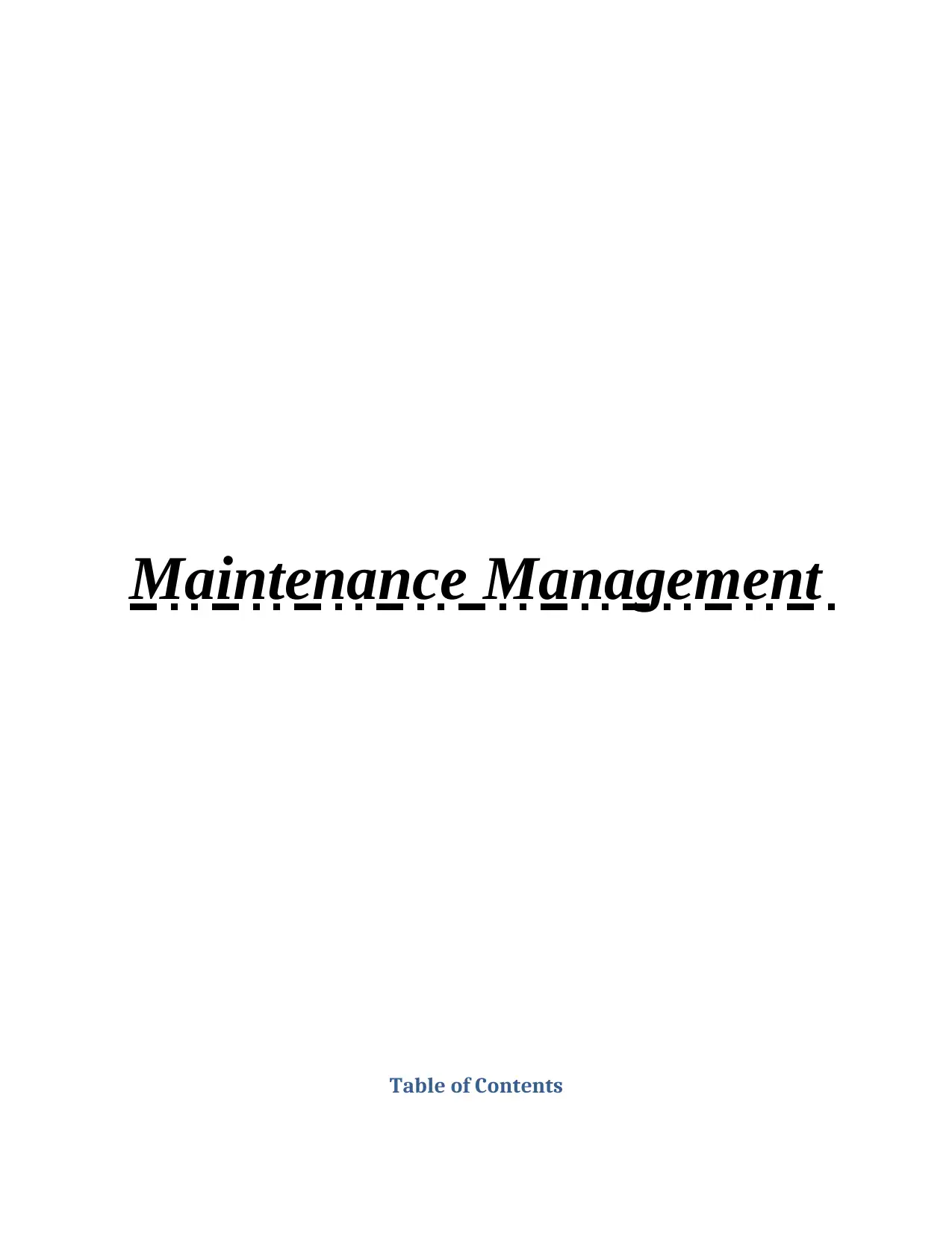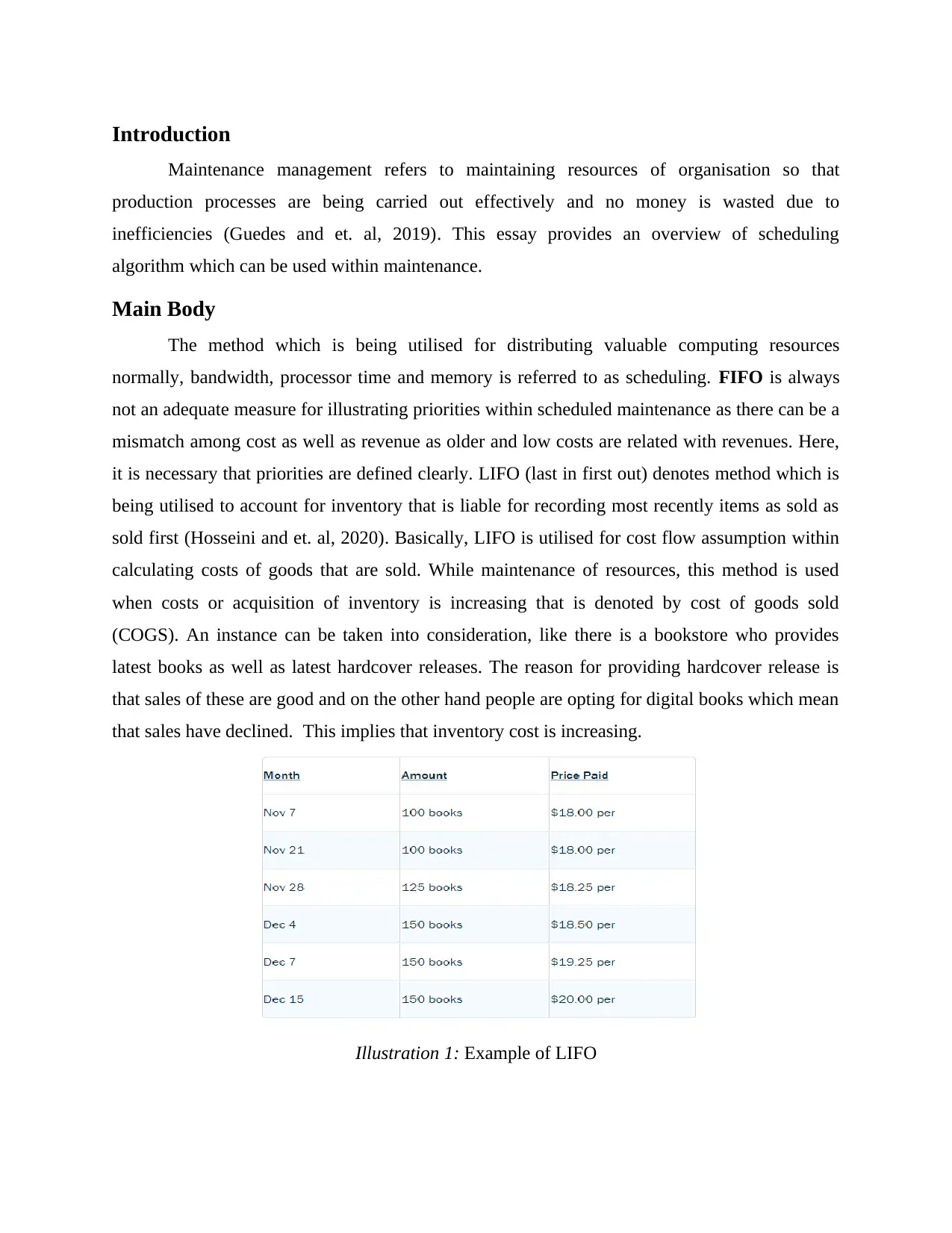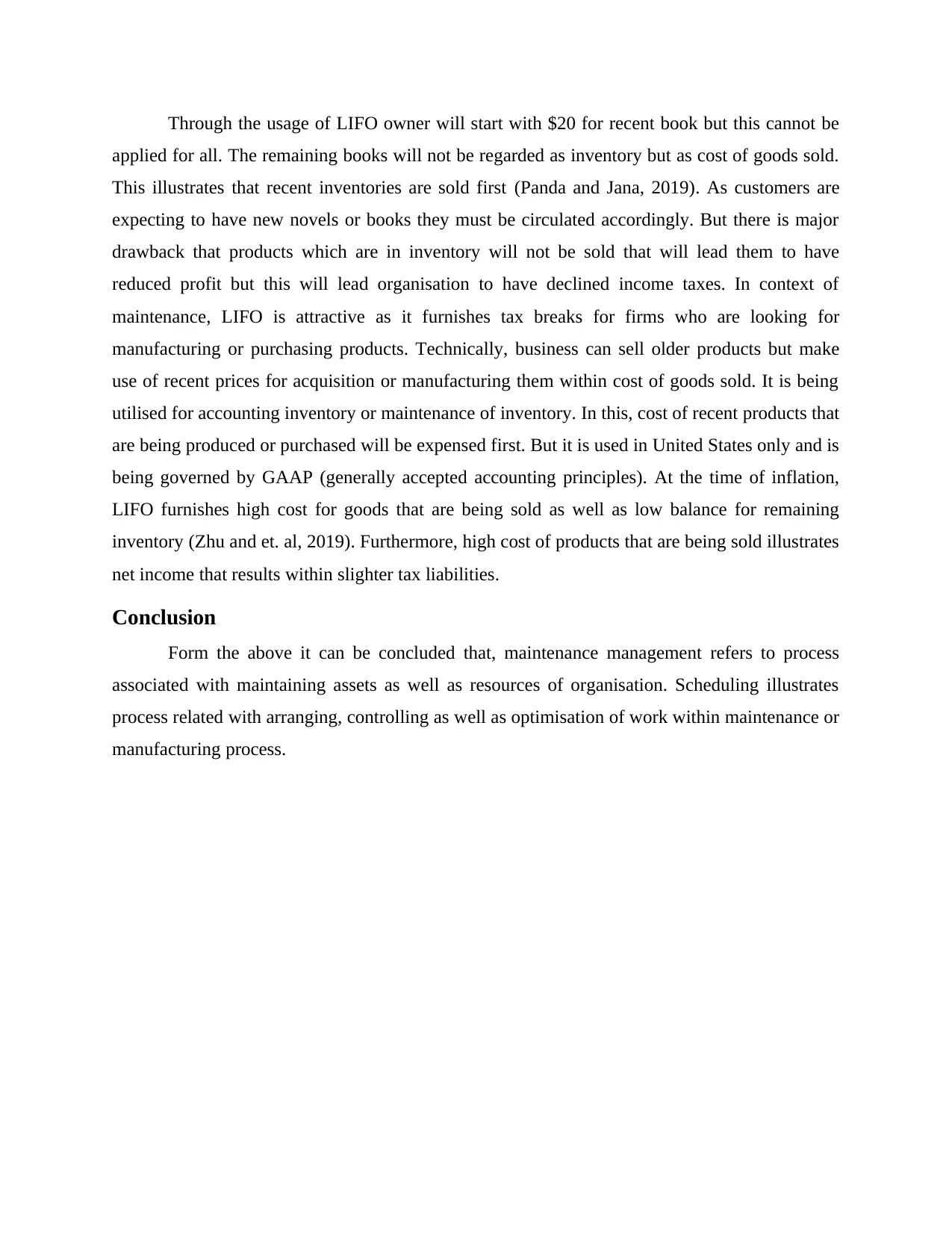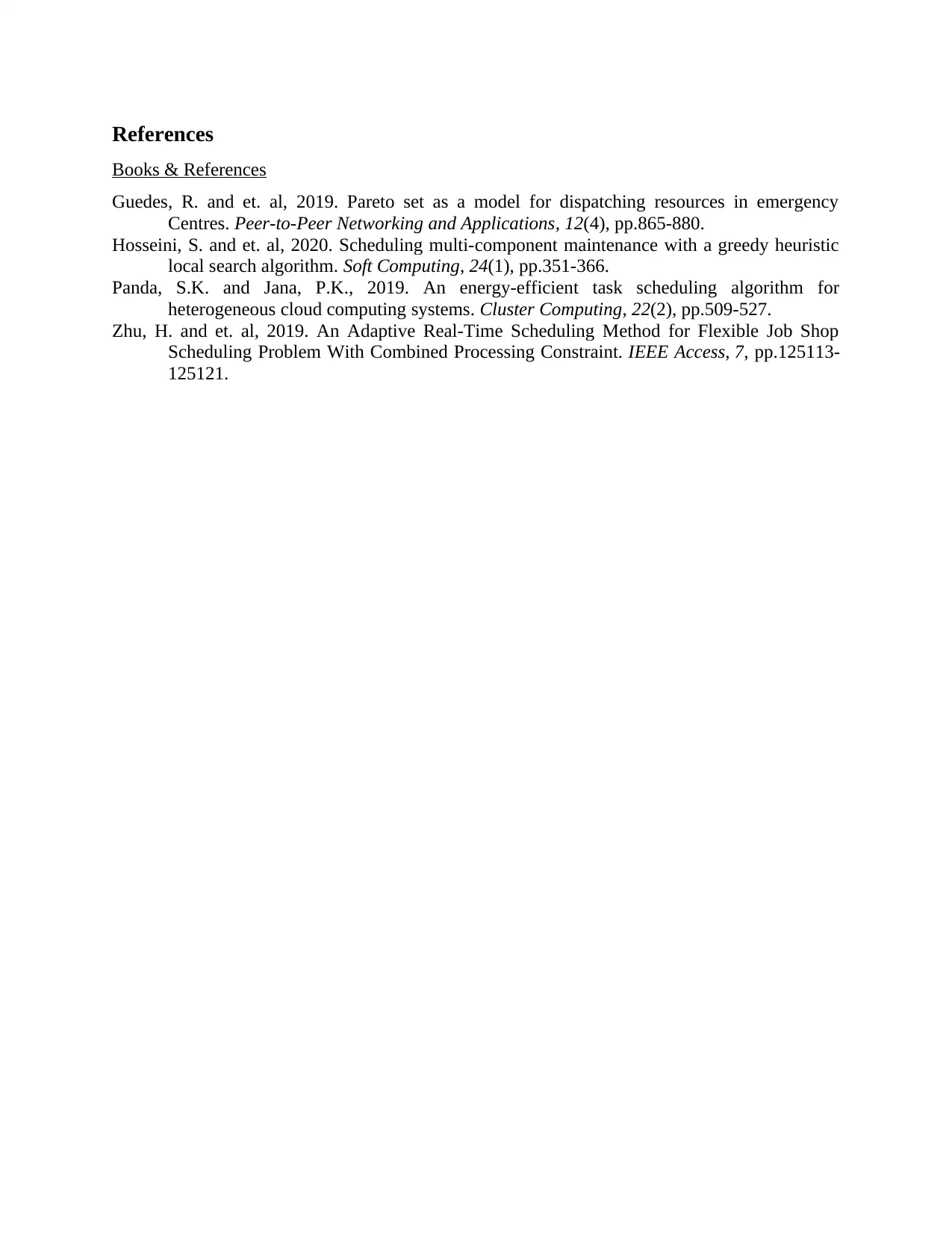Maintenance Management Report: LIFO Scheduling Algorithm Analysis
VerifiedAdded on 2023/01/11
|5
|736
|97
Report
AI Summary
This report provides an overview of maintenance management, focusing on scheduling algorithms. It explores the concepts of FIFO and LIFO methods, analyzing their application in resource allocation and cost management within an organization. The report delves into the importance of clearly defined priorities in scheduling and highlights the advantages and disadvantages of the LIFO method in the context of maintenance, particularly concerning tax breaks and inventory management. Furthermore, it includes a breakdown of computer breakdown data, cost analysis, and preventive maintenance strategies, offering insights into whether a firm should contract for maintenance services. The report concludes by emphasizing the significance of effective maintenance management for efficient resource utilization and cost optimization within organizations. This report provides valuable insights and is available on Desklib, a platform offering past papers and solved assignments for students.
1 out of 5






![[object Object]](/_next/static/media/star-bottom.7253800d.svg)